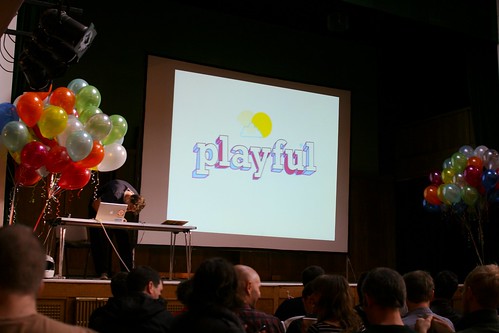 Went to Playful last week in London. A one-day event about games and play, this conference struck me as fascinating because the organizers went beyond the classical lists of speakers from the video game industry. People on stage came from various background: web developers, hackers, geeks, bloggers, interaction designers, art directors, etc... It seems that this was done on purpose as the first editions of Playful were a bit closer to the video game industry. As of last year, the organizers seemed to be willing to go beyond this and bring together a more diverse roster. In the introduction, it was said that "playful was about video-game design but we felt that something was missing... it was actually 'everything else' so we opened it to other fields". I couldn't agree more on that since i think the game designers and interaction design are part of the same practice (which does not imply there aren't any singularities and idiosyncrasies). I tried to list the sort of insights I collected below, for each speaker in a very unstructured way (forgive also the broken English of my notes).
Went to Playful last week in London. A one-day event about games and play, this conference struck me as fascinating because the organizers went beyond the classical lists of speakers from the video game industry. People on stage came from various background: web developers, hackers, geeks, bloggers, interaction designers, art directors, etc... It seems that this was done on purpose as the first editions of Playful were a bit closer to the video game industry. As of last year, the organizers seemed to be willing to go beyond this and bring together a more diverse roster. In the introduction, it was said that "playful was about video-game design but we felt that something was missing... it was actually 'everything else' so we opened it to other fields". I couldn't agree more on that since i think the game designers and interaction design are part of the same practice (which does not imply there aren't any singularities and idiosyncrasies). I tried to list the sort of insights I collected below, for each speaker in a very unstructured way (forgive also the broken English of my notes).
Roo Reynolds (slidecast here)talked about films and games, and how films adapted after games generally suck (based on various examples: . His conjecture was that making a film out of a game is harder than the other way around. Especially because films revolve around a plot. The only film that portrays a game correctly might be TRON. Roo also wondered whether it is possible to create a film based on game mechanics.
Kareem Ettouney from Media Molecule's LittleBigPlanet gave an interesting description of what happens "behind the scenes". He addressed the notion of large-team collaboration in game design. To him, the biggest challenge was the amount of talent to try to create one thing: "Even 4-persons bands have issue so it's more troublesome for game companies... you start being hierarchical, conservative, hold all the strings... as in the old school movie models. Then we started hiring exceptional talents and we remembered what it was like to work at other places, where we did not want to listen to directions". One of his point was that "ownership = responsibility + accountability" as they realized they couldn't do the "old school direction"... so they figure out their new model. Ettouney contrasted the "review approach" (more like a critique about what people did after you asked them to "do the work") and the "input perspective" (sit down and talk about what people bring to the table as solution to problems).
Daniel Soltis from tinker.it then dealt with his interest in hardware hacking and games. I like the way he stated how "we don't make games but we design playful experiences", which is a bit different (especially from the video game industry's viewpoint). What was interesting too was how he showed the opportunities to go beyond the screen and keyboard model. The challenges to do so are quite tough but they could lead to compelling solutions: asynchronous play, geographically-distant play or a changing pool of players (or combination of these variables). Some examples already exist: giant score board, chessboard with giant pieces, Foursquare. However, the mobile phone is perhaps not the best platform... eyes on a small screen... still a device used in one way... and no tactile pleasure of game pieces.

The last bit of the matrix above (drawn from my notes of Soltis' slides) was filled with interrogation marks and he showed few possibilities that I liked a lot:
- The Reverse Geocache Puzzle by Mikal Hart which is a puzzle box that only opens up at specific locations
- Oyster card snowflake: an RFID-enabled snowflake generator which uses the London Oystar card: placedalongside a busy corridor, passers-by are invited to use their Oystercard to discover what kind of snowflake they are.
- iphonehangtime a fun application for the iPhone and iPod Touch that uses the internal accelerometers to measure how long the device is in free fall, from the time it leaves your hand, to the time you catch it again.
Lucy Wurstlin from 4ip presented a set of projects after this nice quote by David Lloyd George: "Play is nature’s training for life. No community can infringe that right without doing deep and enduring harm to the minds and bodies of its citizens". The two projects I liked were audioboo (a sound-sharing website that aims at "becoming the YouTube of the spoken word") and mapumental: an interesting application that help to visualise any neighbourhood in the UK by transit times:

Robin Burkinshaw interviewed by Matt Locke: the discussion was about the Alice and Kev project, an interesting crossmedia approach built in a very grassroots way:
"
This is an experiment in playing a homeless family in The Sims 3. I created two Sims, moved them in to a place made to look like an abandoned park, removed all of their remaining money, and then attempted to help them survive without taking any of the game’s unrealistically easy cash routes. It was inspired by the old ‘poverty challenge’ idea from players of The Sims 2, but it turned out to be a lot more interesting with The Sims 3’s new living neighborhood features.
I have attempted to tell my experiences with the minimum of embellishment. Everything I describe in here is something that happened in the game. What’s more, a surprising amount of the interesting things in this story were generated by just letting go and watching the Sims’ free will and personality traits take over."
The humble approach of Robin combined with the reading was very special and pertinent. And I like how he said "virtual photography is a hobby of mine, i have a whole flickr stream".

James Bridle was introduced as the "most analogue digital person I know" by the conference organizer. In his presentation that you browse over there, he exemplified to what extent "awesomeness is more important than innovation". Starting from a critique of commercial definitions of innovation, he showed what is awesome to him making connections with Douglas Adams or Thomas Pynchon. Two instances particularly echoed with my interests. First, the work of Zak Smith who created an illustration for every single page of Thomas Pynchon’s Novel “Gravity’s Rainbow":
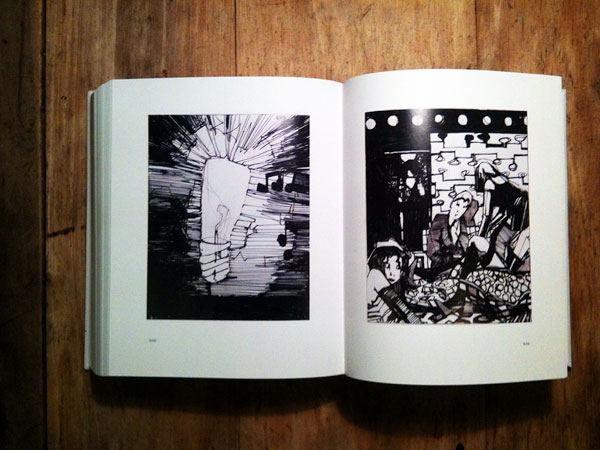
And Tom Phillips, an artist who painted over every page of a Victorian novel to create a new narrative:

The presentation was even more curious when Bridle started to discuss Babbage's machine, Naughts and Crosses engine, the absence of Deep Blue for Go and a MatchBox Go engine.
Katy Lindemann gave a talk about behavior change through games (which some people refer to as "persuasive gaming"): ChoreWars (allows you to get experience points the more housework you do), Fiat EcoDrive (Nike+ for cars), Glucometers for Nintendo DS, a piano staircase, a weird writing robot at the Houses of Parliament to communicate with representatives.

Russell Davies was perhaps the highlight of the day as his talk revolved around the contrast between "world-building" versus "bubble-building". Based on the model railways metaphor, he described these two approaches: "world-building" corresponds to mimicking reality while "bubble-building" consists in putting the railway in your garden where you cannot try to replicate anything (it allows building a "bubble of suspense"). To him, world building is more difficult and he is more interested in "barely games": collecting, negotiating, pretending and inattention.
Collecting is cool and important in gaming (Pokemon: the actual play is less important than the collecting... and you then invent games with objects you collect. noticin.gs is a good example about this approach. Pretending is even more important and collecting things is great for pretending.
You can turn Mario into a pistol or use luxury products (he showed how watch are the ultimate pretending items).
Davies then demonstrated various "pretending" metaphors: Tactile 3D (a 3D interface to navigate your files), 3D mailbox... which do not "work", people simply do not use them because they are not subtle and demand total attention, there's a need to bury pretending details.
[at which point Davies showed fake emails from people pretending to work in huge companies, which I always find hilarious]
So what would a "barely game" feel like, according to him?
- design for walking around (the time I have to play game)
- not looking at a scree (worried with AR which is too demanding)
- uncertain/socially-decided rules
- useful OR stupid
- high pretending value
Good candidates for this: iPhone app to record noise samples, Situated audio platform (SAP: use your device to browse geotagged world sounds, wikipedia audio entries, noises of bombs you can throw), personal informatics devices (nike+, nintendo's walk with me) hooked to something more complex, RJDJ for iPhone (music that changes depending on the noise captured by your microphone or the accelerometer), etc.
And then I had to leave to catch my flight :( More write-ups on the playful website, as well as at Roo Reynolds, Suw Charman-Anderson and more.
Why do I blog this? Messy notes to structure a little bit what I gathered from this conference. It was typically the sort of conference from which you come back with plenty of little insights and nuggets that fuel your mind. Besides, a great game-related event with a low number of CGI and not many WoW screenshots that generally bore me. I wish I could have stayed in the afternoon.
 We've just launched the new website of the upcoming Lift 2010 edition in Geneva. The event will revisit the myths about connected people:
We've just launched the new website of the upcoming Lift 2010 edition in Geneva. The event will revisit the myths about connected people:






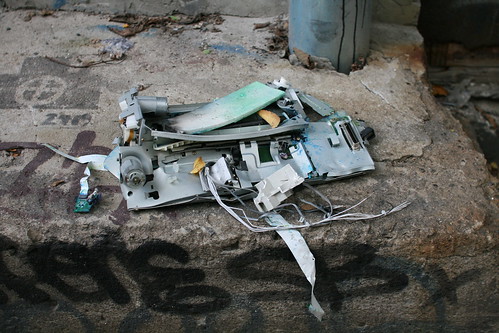
 Read in "
Read in " Evolution of the electronic tube from 1924 to 1952 quoted by
Evolution of the electronic tube from 1924 to 1952 quoted by 




 A digital representation in Super Mario Bros by Nintendo.
A digital representation in Super Mario Bros by Nintendo.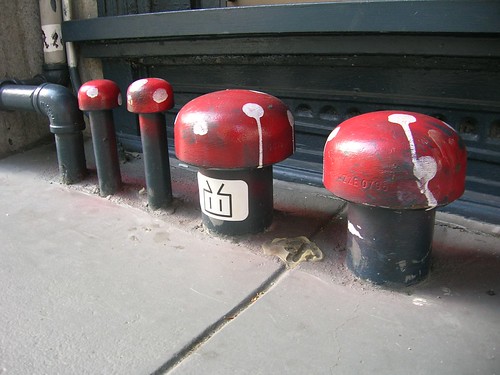



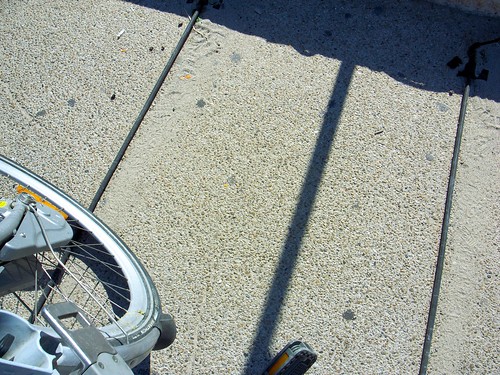
 (Measuring the pedestrian flows in Barcelona using Bluetooth sensors, a project carried out by Fabien for a spanish client)
(Measuring the pedestrian flows in Barcelona using Bluetooth sensors, a project carried out by Fabien for a spanish client) The use of
The use of 

 Various charts by Raymond Loewy, "Evolution Chart of the Desk Telephone,""Evolution Chart of the Railcar," and "Evolution Chart of Female Dress and the Female Figure." 1934
Various charts by Raymond Loewy, "Evolution Chart of the Desk Telephone,""Evolution Chart of the Railcar," and "Evolution Chart of Female Dress and the Female Figure." 1934










